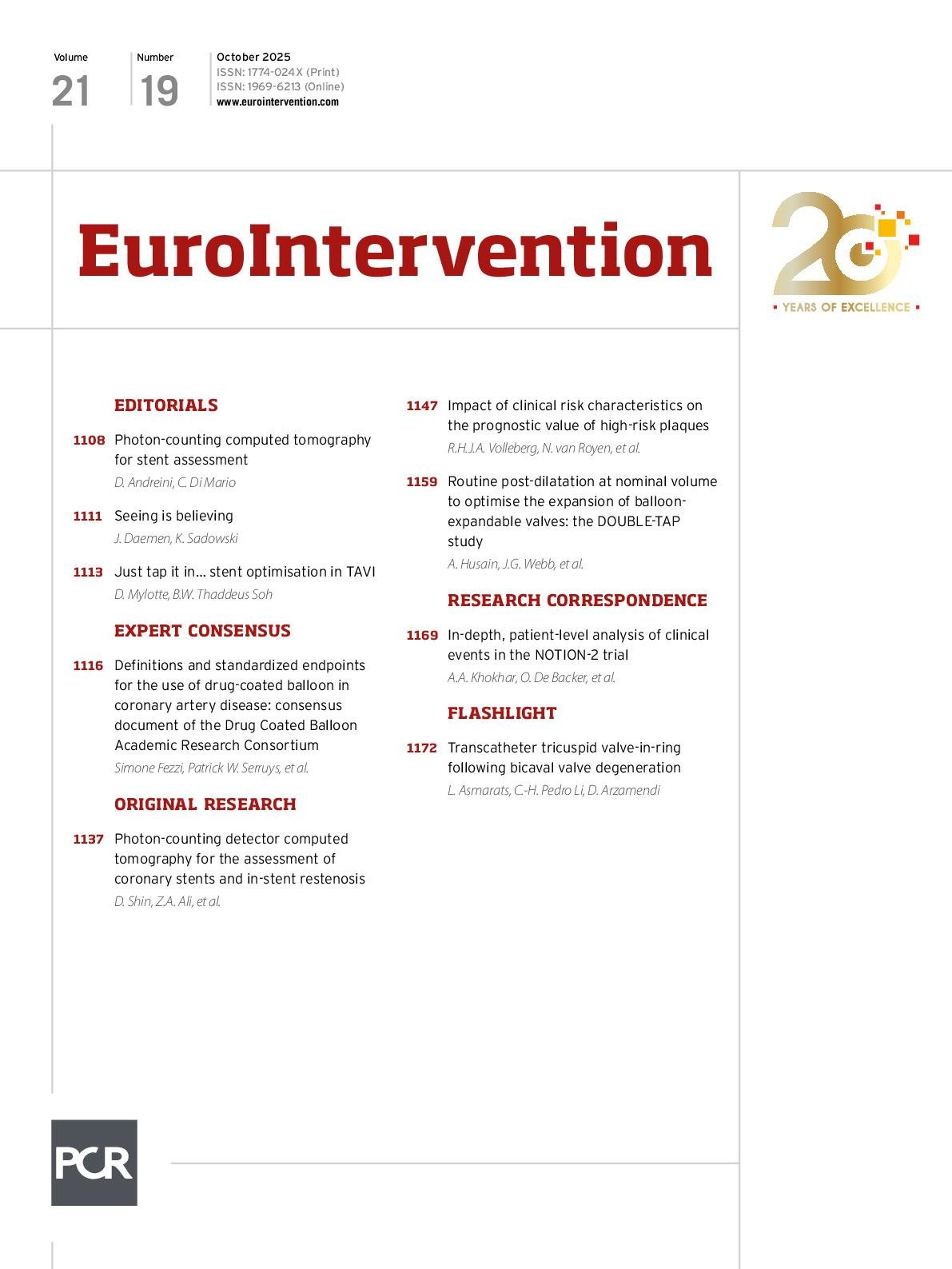A 73-year-old female presented with symptomatic, massive tricuspid regurgitation (TR). The patient had prior rheumatic valve disease with mechanical aortic and mitral valves, tricuspid annuloplasty with a 32 mm MC3 ring (Edwards Lifesciences) and a dual-chamber pacemaker. Computed tomography showed an area of 580 mm2 and a maximum internal diameter of 32 mm of the annuloplasty ring. After the Heart Team review, she was deemed unsuitable for edge-to-edge repair and, given the incomplete rigid ring and pacing lead, was considered at risk of paravalvular leak along the open segment of the ring using a 29 mm balloon-expandable valve. Hence, bicaval valve implantation (CAVI) using 25 mm and 31 mm TricValves (Products & Features) was performed (Figure 1A, Moving image 1). Four years later, she developed progressive dyspnoea and peripheral oedema. Computed tomography showed structural valve deterioration (SVD) of both the superior and inferior vena cava prostheses, with stuck leaflets resulting in a large coaptation gap and severe intraprosthetic regurgitation (Figure 1B-Figure 1C-Figure 1D, Moving image 2). There were...
Sign up for free!
Join us for free and access thousands of articles from EuroIntervention, as well as presentations, videos, cases from PCRonline.com

